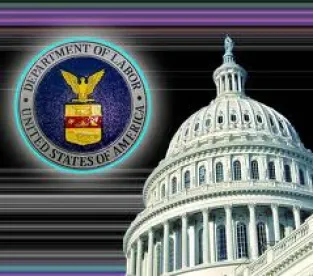We have all heard about the significant effect that the US Department of Labor’s (DOL’s) final fiduciary rule will have on the Individual Retirement Account (IRA) business and investment advice structure. What we have not heard so much about is some potential related fallout from the DOL’s final rule on IRA custodians and trustees in maintaining their IRA documentation and status as IRA custodians and trustees. The extent of the fallout depends on whether IRA custodians and trustees (or their affiliates) may now become “fiduciaries” to IRAs under the new rule.
An IRA custodian or trustee must have in place with each IRA owner an IRA custodial or trust agreement that meets Internal Revenue Code (Tax Code) requirements. Some IRA custodians and trustees use IRS model custodial or trust agreements to satisfy the Tax Code agreement requirement, and others use prototype agreements approved by the IRS. Most self-directed IRA custodial and trust agreements generally have language to the effect that the IRA custodian or trustee takes investment direction solely from the IRA owner, is not responsible for making investment decisions, and is not a fiduciary. Note that this is not Tax Code required language, but it is necessary as a contractual matter to define the IRA custodian’s and trustee’s role in investment decisions. Because the new DOL rule will generally transform broker-dealers and financial representatives who provide any investment advice for a fee or other compensation to an IRA owner into a “fiduciary” under the Tax Code for purposes of the prohibited transaction rules, many of these individuals may become “fiduciaries” for the first time. IRA custodians and trustees will need to review their IRA custodial and trust agreements (as well as their disclosure statements and other materials) to make sure that they reflect any new “fiduciary” status as appropriate for their business model.
If changes to reflect the new “fiduciary” status are needed, the IRA custodian or trustee will need to amend its custodial or trust agreement and other materials. For IRA custodians and trustees using IRS model agreements, this is generally a relatively simple task, but it will involve time and expense to amend the agreements and notify both existing and new IRA owners of the changes. For IRA custodians and trustees using prototype custodial or trust agreements that have been submitted and approved by the IRS, in addition to the time and expense involved in amending the agreements and notifying IRA owners, they have an extra complication. The extra complication arises because, generally, any changes made to prototype agreements are submitted to the IRS for approval before the new prototypes are used. The IRS approval process is somewhat lengthy and generally takes at least three or four months. If many prototypes are submitted at the same time, a log jam could result and the whole process could take even longer. In addition, because the prototype IRA custodial and trust agreements have generally not been required to be updated for changes in the law since 2002, the IRS may require any prototypes submitted that have not been updated to be updated for law changes before approval. To make sure that updated IRA documentation is in place by the time that the new DOL fiduciary rule becomes applicable next April, IRA custodians and trustees need to start reviewing their documents as soon as possible, especially for IRA custodians and trustees who maintain prototype agreements.
We have made the IRS aware of this potential pitfall, but so far we have not heard anything. In part two of this series, we will address the effect of the DOL fiduciary rule on IRA custodians and trustees that have been approved by the IRS to act as nonbank custodians and trustees.
Read part 2 here - Fallout from DOL Fiduciary Rule: Some Potential IRS Pitfalls for IRA Custodians and Trustees (Part 2 of 2)



 />i
/>i

